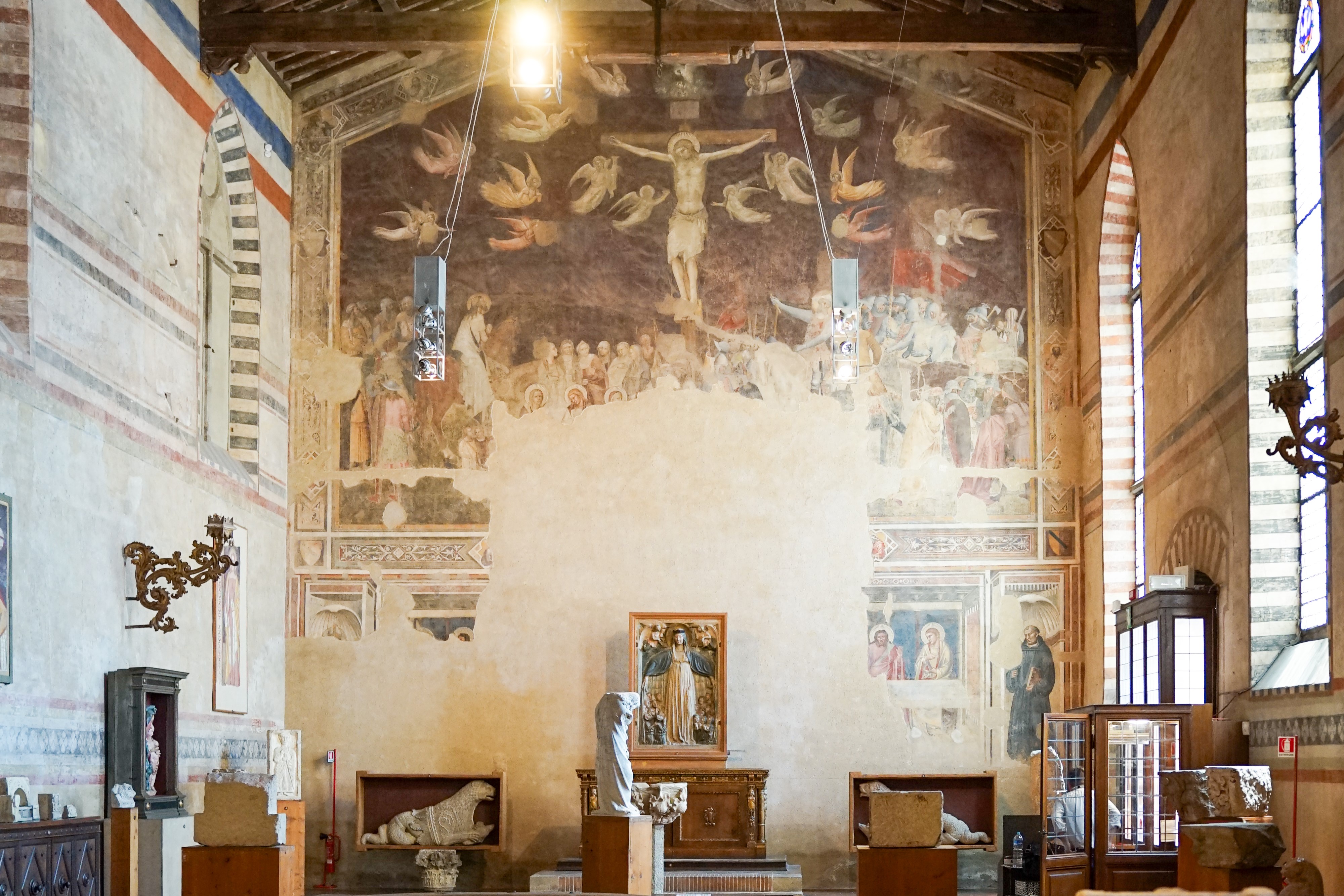New lighting for Salvatore Romano Foundation
Thu, 08/07/2025 - 09:58
A new lighting for the Salvatore Romano Foundation further enhances the museum's collection, a small but carefully curated collection of great historical and artistic value spanning from Roman times to the 17th century.
The museum is located in the ancient Refectory of the convent, erected beside the church of Santo Spirito by the Order of Hermits of St. Augustine. Built in the Gothic style in the 14th century, it is the only part of the magnificent monumental complex of Santo Spirito that still preserves its original structure. Its ancient function is remembered by the imposing 14th century fresco by Andrea Orcagna and his workshop that decorates the entire eastern wall, at the bottom showing the fragments of the Last Supper and at the top, a superb Crucifixion. The fresco is not only one of the best works of Orcagna, but also one of the largest wall paintings of the 14th century to be conserved today.
The museum displays the works donated to the City of Florence in 1946 by Salvatore Romano, a collector and antiquarian from Campania, who amassed a prestigious collection of sculptures, fragments of architectural decorations, detached frescoes and furniture of various origin and age, from ancient Roman to the 17th century. To host the works “collected” over time, Romano purchased two floors of Palazzo Magnani Feroni in 1939 and the 2009 Sotheby’s auction, which saw them “involved”, lasted for four whole days (the catalogue included 1813 lots).
The display of the works has remained that foreseen by Salvatore Romano himself as per the deed of donation: sculptures, fragments of architectural decoration and detached frescoes, distributed throughout the room so that we can observe them one by one, up close, and fully enjoy their beauty.
The collection of Romanesque sculptures preserved here is one of the rare examples of Romanesque art in Florence. Among the most significant works are the Caryatid and the Adoring Angel by Tino di Camaino, the Madonna with Child by Jacopo della Quercia and two bas-reliefs depicting Saint Prosdocimus and Saint Maximus by Donatello, which are from the Basilica of Saint Anthony in Padua.
The Caryatid and the Adoring Angel by Tino di Camaino were created around 1320. The Caryatid wears a long mantle that opens at the chest revealing a lorica, a type of armour used by the ancient Ro- mans, with decorations in relief. Of the right arm, only the hand remains, holding a fold of the mantle. The particular pose of the figure with its slightly bent legs, raised left shoulder, and head bowing towards the right, as if carrying a weight, indicates that we have before us a caryatid, a term used to describe the figured supports that act as columns or pilasters. The Adoring Angel depicts an angel as also attested by the presence, on the back, of holes where in the past the pins of two metal wings were inserted. The arms crossed on the chest, the right leg bent, the bust inclined forward and the head turned upwards indicate a worshipping pose.
The Madonna and Child by Jacopo della Quercia dates back to 1410. The terracotta work was created for the courtyard of Palazzo Segni-Masetti and is notable for the tenderness that shines through: the Madonna lovingly embraces her son, transmitting a deep maternal love to those who observe her. The Virgin holds the Infant Jesus protectively under her mantle, a melancholy, pensive look on her face as she presages her Son’s tragic future. The work is of high quality, both for the modelling and the details of the polychromy.
